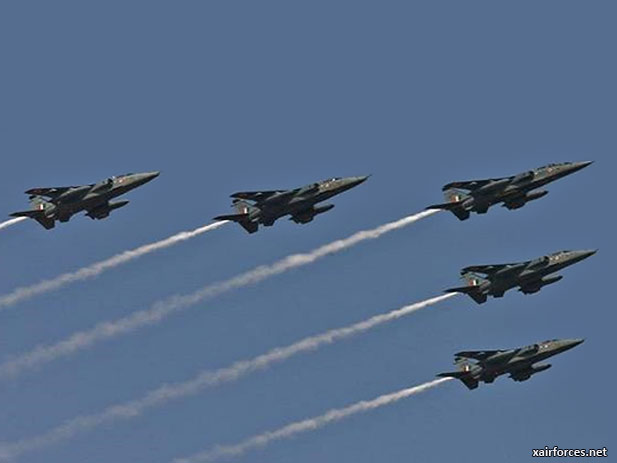
Indian Air Force Practices in Biggest War Game

Indian Air Force practices for twin-front contingency against China, Pakistan in biggest wargame. China can "throw'' at least 21 fighter squadrons against India, from its eight airbases in Tibet and other airfields to their north.
Even more Chinese fighters can join forces if they are able to overfly Myanmar. Similarly, Pakistan can deploy 21 to 25 fighter squadrons against India.
With this hard-nosed assessment in mind after defence minister AK Antony himself asked the forces to be ready for the twin-threat posed by China and Pakistan, the largest-ever combat exercise undertaken by IAF tested its capability for a two-front contingency by deploying "swing forces'' from the western theatre right across to the eastern one.
IAF did "extremely well'' during the 'Live-Wire' exercise, conducted from March 18 to April 4 with over 8,000 hours of flying sorties, to maintain the "high-tempo surge operations'' to "validate its two-front deployment capability''. Frontline Sukhoi-30MKIs even flew long-range missions from Chabua (Assam) to the western front, with mid-air refuelling, for bombing missions, sources said.
But the wargames, with over 400 fighters and 200 transport aircraft and helicopters, also sharply underlined the "criticality'' of soon finalizing the almost $20 billion MMRCA (medium multi-role combat aircraft) project to acquire 126 fighters.
IAF is grappling with just 34 fighter squadrons (each with 14 to 18 jets) at present despite the primacy of airpower in modern-day battles. IAF itself has held it needs at least 44-45 squadrons to meet the "possible contingency'' of "a full conflict'' with Pakistan, while maintaining "a dissuasive posture'' against China.
Even as the progressive phasing out of ageing MiG-21 squadrons is now on hold to retain combat readiness, IAF is keeping its fingers crossed that the long-delayed MMRCA contract is inked with French major Dassault Aviation for its Rafale fighters before this year ends.
"We can then begin getting the new fighters from early-2017 onwards. Problems in the contract negotiations between MoD and Dassault over Hindustan Aeronautics' responsibility (the first 18 jets will come from France, with HAL producing the rest 108 with transfer of technology) are being sorted out,'' said a source.
IAF does need systematic induction of fighters and helicopters, mid-air refuellers and transport planes, spy and combat drones, surface-to-air missiles and advanced radars, with projections showing India will spend upwards of $35 billion over the next 10 years to boost its air combat power.
In the interim, IAF banking upon the progressive induction of the 272 Sukhoi-30MKIs contracted from Russia for around $12 billion as well as the mid-life upgrades of 51 Mirage-2000s and 60 MiG-29s.
For the long-term, the plan is to induct over 200 5th Gen swing-role fighters from 2022 onwards. India and Russia are slated to soon ink the $11 billion full design R&D contract for the stealth jets, with each chipping in with $5.5 billion. India will eventually spend around $35 billion on this futuristic fighter project over the next 15-20 years, with each jet to be subsequently produced costing over $100 million.
Source: NEW DELHI, Rajat Pandit, TNN News - 16 April 2013
Photo: The Indian Air Force Jaguar Fighter Aircrafts. The IAF, in the largest-ever combat exercise, tested its capability for a two-front contingency against China and Pak by deploying “swing forces". (Photo by IAF)
(16.04.2013)
|